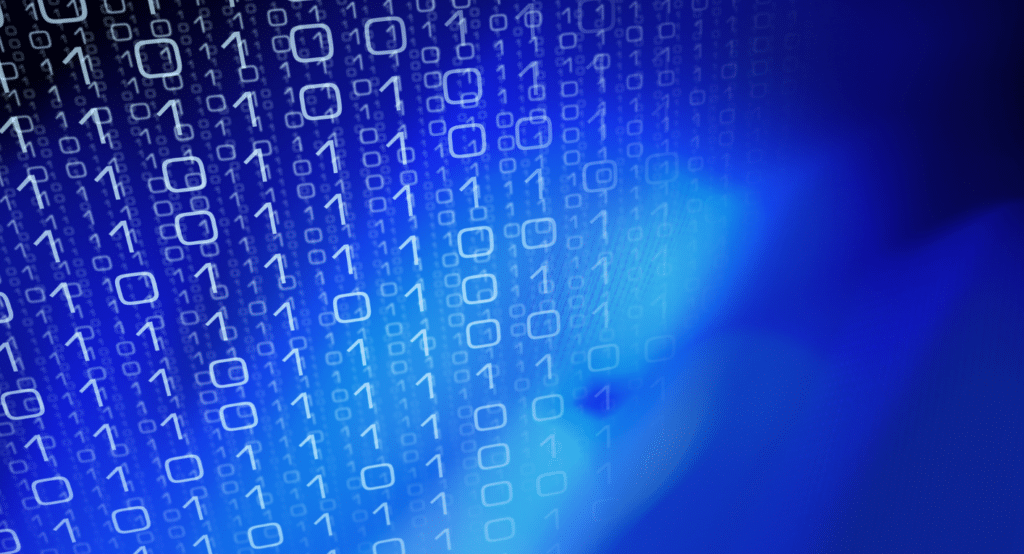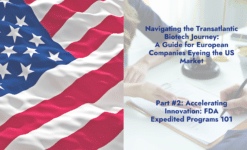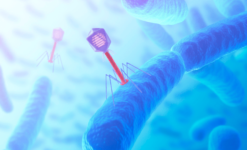
Recently, the United Kingdom Medicines and Healthcare products Regulatory Agency (MHRA) has provided updates to the guidance Software and AI as a Medical Device Change Programme. This guidance was first published in September 2021, following Brexit. But what does the programme entail and how does it compare to global regulatory frameworks for software as a medical device? To better understand the current measures in the UK, in this series of articles we explore key regulatory frameworks for software and artificial intelligence (AI) as a medical device worldwide.
In this blog series, we begin by introducing a variety of software tools used in digital health, key definitions, and potential applications in healthcare. Additionally, we share information on where to find software devices already approved. In our second article, we dive into the specifics within regions, exploring regulations established in the United States (US) for the safe and efficient development of digital health applications. The same exploration is performed for the European Union (EU). This then leads to post-Brexit UK and its ongoing transition away from EU regulations to the new UK regulations, currently under development. We provide a summary of the current state-of-affairs, and insight as to the UK’s strategy to maintaining efficient innovation during this process. Finally, we conclude this series of articles by covering key challenges for the development and widespread implementation of software and AI as a medical device.
Software as Medical Device: Tools in HealthTech
The covid-19 global pandemic has reignited an urgent demand for digital technologies to aid data management, reduce human bias, and improve disease diagnosis, treatment, and prevention. It has also highlighted the need to better support users/ patients outside of traditional healthcare facilities to anywhere they might be. To achieve such objectives the development of tools including, artificial intelligence (AI), big data, blockchain, and digital platforms for communications, has become a key focus in the healthcare industry. Such tools also have the potential to dramatically improve the quality and efficiency of overall healthcare services – via automation, acceleration, and democratization of data collection and analysis. More specifically, artificial intelligence computer algorithms can also assist in the exploration of healthcare data and optimizing decision-making processes.

Table 1. Example Applications of AI-based Software as a Medical Device
As this field continues to evolve rapidly, how are regulatory frameworks adapting to ensure the safety and efficacy of products incorporating such technologies? To answer these questions, first we must look at the basics: what is software and AI, and when is software considered a medical device according to regulatory agencies?
A software is a combination of programs and procedures, which provide a computer with instructions on tasks to be performed. It has also been defined in the EU as a set of instructions that processes input data and provides output data (see MDCG 2019-11).
Artificial Intelligence (AI) is a field of computer science in which algorithms are developed and trained to performs specific tasks – usually requiring human intelligence. It is a collection of software components whose collective function mimics that of biological cognition. Examples include everyday technologies such as Apple’s Siri, Amazon’s Alexa, IBM’s Watson.
AI systems can be broadly split into two large categories based on whether they utilise previously validated clinical protocols to produce predictable results, or act independently of human reasoning to discover new relationships between inputs, actions, and outcomes.

Table 2. Types of AI-based Systems
AI can also be classified into distinct types of technologies; however, it is important to remember these technologies can be used in combination for different healthcare applications. Machine learning (ML) entails converting large sets of data into useful information, via “mapping.” Within machine learning, deep learning is a method aiming to mimic the learning process of the human brain, via artificial neural networks. Another branch of AI is natural language processing (NLP), which automates the extraction of text information (as opposed to numerical information), by organizing unstructured text into a structured form to be interpreted by an algorithm.

Image 1. Subdomains of AI-based Systems
Artificial Intelligence & the Qualification of Software as Medical Devices
Software technologies, with a medical purpose are classified as medical devices, according to regional regulation bodies, including the European Commission and Food and Drug Administration (FDA). According to the World Health Organization (WHO), medical devices are defined as “any instrument, apparatus, implement, machine, appliance, implant, reagent for in vitro use, software, material, or other similar or related article, intended by the manufacturer to be used, alone or in combination, for human beings, for one or more specific “medical purpose” and it “does not achieve its primary intended action by pharmacological, immunological, or metabolic means, but which may be assisted in its intended function by such means”. This definition contains a broad range of technologies, including software and AI.
However, this definition varies in its details depending on the jurisdiction (see Table 1, comparing the European Commission and FDA definitions). Thus, regulatory experts recognise the hurdles this may create for innovation at international scales and the need to harmonise frameworks to provide innovators with more clear guidance in product development.

Table 3. The Requirements for Medical Device Product Qualification,
according to the European Commission & the FDA.
In an effort to reach harmonisation on medical device regulation, the International Medical Device Regulators Forum (IMDRF) was established in 2011. IMDRF is a voluntary group of medical device regulators from around the world with the aim to develop internationally agreed upon documents related to medical devices. In 2013, IMDRF formed the Software as a Medical Device (SaMD) Working Group, which has developed key definitions, framework for risk categorization, the Quality Management System (QMS), and the clinical evaluation of SaMD.
Here, Software as a Medical Device is defined as “software intended to be used for one or more medical purposes that perform these purposes without being part of a hardware medical device.” This definition, however, still relies on the regional definitions of medical device, which, as we have already mentioned, are not the same around the globe.
Reference Databases for Software as Medical Devices
To have an idea of what software and AI/ ML-based medical devices have been approved or made available in the aforementioned markets, the following databases can be of help:
- The (US) FDA has approved 178 AI/ML software-based medical devices as of October 2022, which can be found directly on their website. All FDA cleared devices, however, can be found in Devices@FDA (PMA and 510(k)) and Device Classification Under Section 513(f)(2)(De Novo)
- The European Commission does not yet have a publicly available list or database dedicated solely to SaMD, including AI/ML-based software. Once fully implemented, the European database on medical devices (EUDAMED) will make publicly available the list of all medical devices and in vitro diagnostic medical devices in the EU.
- Similarly, (UK) MHRA’s Public Access Database for Medical Device Registration is a public register of manufacturers and the devices they make available on the UK market, which is not specific to a certain category of devices.
Conclusion
Over recent years, AI/ML-based software as a medical device has increasingly become a key tool in healthcare applications. However, there is a large variation in the types of software tools, which can be used for healthcare, and the regulation of these varies between geographical regions. In our next 3 articles of this series, we will be exploring the regulation of software as a medical device (SaMD) in the different geographical markets: the US, EU and the UK.
References:
- He et al. (2019) The practical implementation of artificial intelligence technologies in medicine, Nature Medicine. Link
- BSI white paper – Recent advancements in AI – implications for medical device technology and certification. Link
- The Federal Food, Drug, and Cosmetic Act of 1938 section 201(h). Link
- European Commission Medical Device definition: Council Directive 93/42/EEC (MDD) and EU MDR 2017/745. Link
- Naik et al. (2022) Legal and Ethical Consideration in Artificial Intelligence in Healthcare: Who Takes Responsibility?, Frontiers Surgery. Link
- A. Yaeger et al. (2019) United States regulatory approval of medical devices and software applications enhanced by artificial intelligence, Health Policy and Technology. Link
- Beckers et al. (2021) The EU medical device regulation: Implications for artificial intelligence-based medical device software in medical physics. Link
- Medicines and Healthcare products Regulatory Agency (MHRA): Guidance Software and AI as a Medical Device Change Programme. Link
- ICMRA, Informal Innovation Network, Horizon Scanning Assessment Report – Artificial Intelligence, August 6, 2021. Link
- K. Aronson et al. (2019) Medical Devices: Definition, Classification, and Regulatory Implications, Drug Safety. Link
- Gerke et al. (2020) The need for a system view to regulate artificial intelligence/machine learning-based software as medical device, NPJ Digital Medicine. Link
- International Medical Device Regulators Forum (IMDRF). Software as a Medical Device (SaMD). Link
- FDA, Digital Health Terms, Software as a Medical Device. Link
- FDA, Artificial Intelligence and Machine Learning in Software as a Medical Device. Link
- Regulatory Affairs Professionals Society (RAPS) Blog, The UK Regulatory Landscape Post Brexit. Link
- Medicines and Healthcare products Regulatory Agency (MHRA): Software and AI as a Medical Device Change Programme – Roadmap. Link
- Muehlematter et al. (2021) Approval of artificial Intelligence and machine learning-based medical devices in the USA and Europe (2015-20): a comparative analysis, Health Policy. Link
- E. D. Han et al. (2022) Opportunities and Risks of UK Medical Device Reform, Therapeutic Innovation & Regulatory Science. Link
Please refer to the links below for other blog posts of this series:
Published on: April 21, 2023








